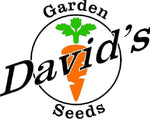NPK Plant Essentials
Have you heard of NPK fertilizer? The NPK stands for nitrogen, phosphorus, and potassium, always in that order.

In the above photo of a bottle of fertilizer that came with our Farm Store grow tower, 0-1-3 means zero nitrogen, 1% phosphorus, and 3% potassium are in this grow tower liquid fertilizer.
Fertilizers add what your soil does not have so you get healthy plants that produce good quality food. They also replace whatever nutrients were depleted from last year's garden. While we are on that subject, you should be rotating your crops every year so that your plants get the most out of the soil's nutrients. Different plants need different things in the soil.
Why NPK? NPK fertilizer was created by a scientist named Justus von Liebig back in the 1840s. Several other scientists perfected the idea over the next 60 or so years. Now, all fertilizers follow the NPK Fertilizer method because these are the big three ingredients that every plant fertilizer needs. Of course, there are other things plants need but in as big a quantity or percentage as the Nitrogen, Phosphorus, and Potassium.
If you plant a garden each year, planting the same vegetables in the exact same space every year, it is time to fertilize and to move your crops to different areas of the yard.
You should fertilize your garden area once in early spring from March to April before you plant, in late spring in mid May when the plants are beginning to really take off and again in late fall once your crops are harvested. Here in Texas, by May, we have harvested most of our plants and it is about to get too hot for anything else to grow until fall. So for Texas, February is a better time for the first fertilizer application and mid April is a better time for the second. The last fertilizer application should probably be somewhere in late November or mid December, depending on when that first frost hits each year.
Nitrogen is what helps your garden plants make protein. If your plants are yellowing or have turned a pale shade of green, they need nitrogen. They may have weak stems as well. If you give them too much nitrogen, your plants will produce a lot of beautiful, lush, green leaves but not put out any fruit or flowers. Nitrogen also helps your plants grow faster. Slow growing, unhealthy looking plants probably need nitrogen.
Phosphorus is what helps plants bud and set fruit. It also encourages good, strong roots and helps the plant make seeds. Phosphorus also processes the sunlight that the plant receives into energy that the plant needs.
Potassium allows the plants to grow strong and healthy. Plants with low potassium content tend to be stunted and won't grow much, if any, fruit. It promotes disease resistance. Potassium also builds sugars and starches in plants so that fruits and vegetables form well and taste good. It helps with the movement of water in the plants.
Calcium, manganese, magnesium, copper, sulfur, boron, zinc, molybdenum, chlorine, and iron are also needed by plants. They can be included as fillers in fertilizers.
It is best to add fertilizer in small amounts. Think of it like this: Less is more... With some ingredients, it is not good to add a lot. It can burn your plants and add unhealthy amounts of nutrients to your soil and to the water tables. Do not fertilize frequently. David fertilizes once the plant is established and then every other week after that according to instructions. He does test the pH of the soil with a kit he gets on Amazon. David prefers using liquid fish fertilizer and Garrett Juice. Slow release fertilizers are the way to go instead of dumping everything on the plants all at once. Slow release granules also work well.
Every time you see a package of NPK fertilizer, there will be three numbers like 10-10-10 (10% nitrogen, 10& phosphorus, and 10% potassium), 24-0-0 (24% nitrogen, 0% phosphorus, 0% potassium), or 5-5-5 (5% nitrogen, 5% phosphorus, 5% potassium). The first number always refers to the amount of (N) nitrogen in the fertilizer. The second number always refers to (P) phosphorus. The third number always refers to (K) potassium. It is always in this order.
Before you add fertilizer, you need to test your soil. Guessing is not good. Pick up a soil test kit at a local garden center (we do not carry these) or order one off of Amazon. Test your soil and then you will know what your soil is lacking. Testing will help you choose the correct fertilizer for your garden this year.
We recommend Medina Agriculture Products. Stewart Franke has been a friend of our business for many years. Their products are organic and work very well, in sand and soil. They are located just forty miles from our business so I get to go there and buy my products direct. But you will find them in many stores.
If you need the best heirloom, Non-GMO seeds, just visit David's Garden Seeds®.







Leave a comment